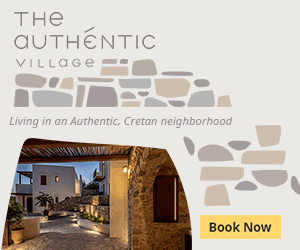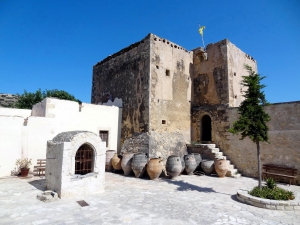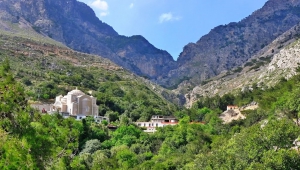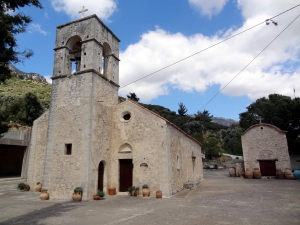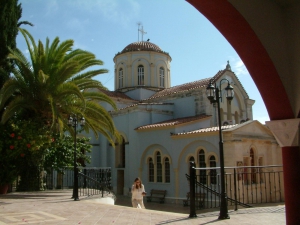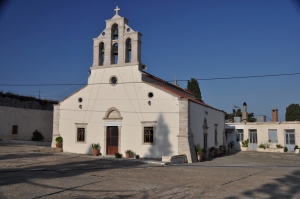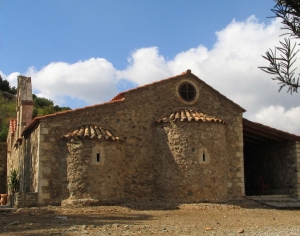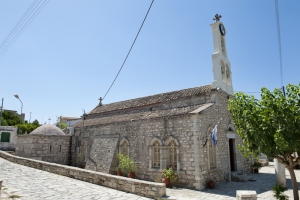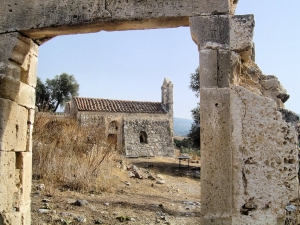Odigitria Monastery is a male monastery located in a protected position of Asterousia Mountains, at an altitude of 250m. The monastery can be accessed through the village of Sivas in Messara Plain. It is one the most historic monasteries in Crete, known for its huge estate, with several chapels and vast land property in Asterousia Mountains.
The monastery of Agios Nikolaos (Saint Nicholas) is located just off the beautiful canyon Gafaris (or Rouvas), about 48km southwest of Heraklion and 3km north of Zaros village. It is situated at the point where in 1994 a great fire burnt much of the beautiful pine forest of the gorge.
Vrontissi monastery is located 49km southwest of Heraklion, near Vorizia Gorge, between the villages of Zaros and Vorizia. The area has panoramic views of Vorizia village and the plain of Messara. The monastery is dedicated to Saint Anthony and is one of the oldest monasteries in Crete.
The Monastery of Panagia Kalyviani is located at an altitude of 80m around 60km south of Heraklion, next to Mires and Kalyvia villages. It is a relatively new monastery which was built on the ruins of an older one.
The Monastery of St. Anthony in Apezanes or Apezana is built on a rocky plateau of Asterousia Mountains, at an altitude of 440m, approximately 63km south of Heraklion. From there starts a short valley that leads from Antiskari village to the beachfront of Platia Peramata.
The deserted monastery of Varsamonero is located about 53km southwest of Heraklion, on the southern slopes of Psiloritis Range. It was built in a panoramic area near Vorizia village, overlooking the plain of Messara.
The village Agii Deka (Ten Saints) is named after the ten Cretan Christians that martyred there during the persecutions carried out by Decius in 250 AD. At the point where they martyred, at position Alonion, there is the three-aisled basilica of the 12th century.
A short distance north of the village Vori there was the monastery of Panagia Kardiotissa, a dependence of Varsamonero monastery. Today the double-nave vaulted church with wall paintings in the south aisle survives. The north wall still hosts an arcosolium.








